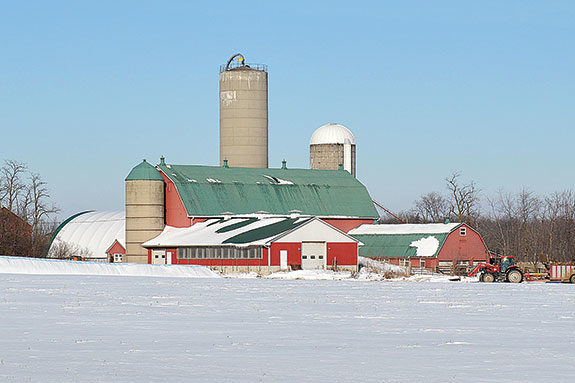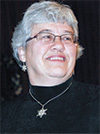This shield is awarded to Holstein breeders who have achieved superior results both in milk production and in type classification over a number of years.
Production can be based on the Composite Deviation within the herd (minimum +40 required), the Composite BCA (Breed Class Average – minimum +100 required) or on lifetime production more than 60,000 kilograms.
Type classification minimum is 83 points – a high Good Plus rating. Extra points can be gained for longevity by cows completing seven or eight lactations. Herds compete with other herds of comparable size/number of female registrations per year, which gives smaller operations equal opportunity.
The Master Breeder shield was first awarded in 1929, with a total of 756 awarded to date. Six hundred and fourteen have gone to first-time recipients, 115 to second-time recipients, and only 27 have been third-time awards. No single prefix has received a fourth shield to date.
Alain Lajeunesse, of Holstein Canada, describes, “For many producers, receiving a Master Breeder shield is the highest recognition they could hope to achieve. Each year we select 20 or 21 producers to receive this honour.
There are approximately 12,000 Holstein breeders in Canada, so this is a very competitive and prestigious award.”
Peartome Holsteins is a family operation consisting of Doug and Mary-Ann Peart with their daughters, Jennifer and Heather. Both girls are heavily involved with the farm and herd.
Doug is third generation on this farm, purchased in 1920 by his grandfather Charles. Doug’s father, Frank, took over in 1953, and Doug took the reins in 1978. Doug holds a degree in animal science from the University of Guelph.
Jennifer graduated in 2006 from Guelph with a degree in agricultural business. She works full-time for Farm Credit Canada in addition to taking part in farm activities. She has a small herd of her own registered as Maple Leaf Jerseys, in addition to her part with the Holstein herd.
Heather graduated in 2009 from Guelph with an animal science degree. She also has her own prefix – Into Holsteins.
The family owns 750 acres, part of which was recently purchased by the girls, and most of their feed is home-grown. They feed a mixture of corn silage and high-moisture corn, mixed with protein supplement.
Wrapped hay is fed as well. This year the cows are eating a higher-than-normal percentage of corn silage due to serious drought problems in this part of Ontario last summer.
Hay is in very short supply and very expensive to purchase. The family does all their own fieldwork with the exception of combining.
The milking herd numbers about 70 cows, mostly Holsteins with about 10 Jerseys. They are housed in a tiestall barn, using a collar and chain tie system. Milking is done with seven automatic take-off units.
Jennifer and Heather manage this job. Doug is responsible for feeding. Mary-Ann tends the small calves and looks after bookkeeping for the farm.

Calves are housed in hutches for their first two months, then in group pens ‘til about 8 months. A cover-all barn accommodates freestalls for heifers and dry cows. They do not use pasture.
Peartome’s first Master Breeder shield was earned in 1990, the second in 1998 and the third in 2011.
Doug was involved in breeding decisions for the farm from an early age, while still a youth at home.
Following graduation from Guelph, he took on a more active role, worked at improving feeding methods and was open to new technologies and advice from other seasoned dairymen.
Doug credits the success of his herd primarily to use of embryo transfers (ET) – flushing his best cows and breeding to the best available bulls. His first ET calves hit the ground in 1985.
He feels that the quality of his entire herd has increased, largely due to this practice. The Pearts are still using ET technology to further the improvement of their herd. Since Doug took over as primary operator, the farm has bred 34 EX cows, eight of which are currently in the herd.
Doug comments on his shield wins: “It is an unbelievable honour. The third one was a surprise. My goal was to win one (shield); I never dreamed of winning three.”
It will be at least 13 years before the Peartome herd is eligible for another Master Breeder shield, as new rules have introduced a minimum time between shields.

Still, the family can lay credit to a total of five shields, as Mary-Ann’s father, Ted Van Wyk, of Woodstock, Ontario, had earned two shields in 1977 and 1980 with his own Wykdale herd.
Meanwhile, the family is gearing up to take a big “plunge” this year. The National Holstein Convention is coming to Niagara Falls in April. Doug is chairman of this event, which has “Plunge Into Niagara 2013” as its theme.
The entire Peart family has done just that, with all members involved in the extensive planning required for such a major event.
Mary-Ann is secretary; Jennifer is responsible for registration and promotion.
Heather’s part is to keep things happening smoothly at home to free up time for the others.
All other activities are pretty well suspended during this time. Jennifer has maintained her position as director of the Haldimand-Norfolk Holstein Club, but Doug has given up his position in the club, and as a 4-H leader, to devote all his time to the convention.
The Pearts have had much success but have experienced their share of challenges as well. 2012 was one of those years, as they had to deal with problems due to stray voltage that caused heavy livestock and production losses, as well as a severe drought in the area and an infestation of army worms at haying time.
Still, Doug looks forward with enthusiasm. “I’m thrilled both girls are interested in agriculture and the dairy industry. It would be fantastic to help them take over some day,” he muses. PD
Alice Guthrie is a freelance writer from Hagersville, Ontario.
PHOTOS
TOP: A view of Peartome Holsteins’ farm buildings.
MIDDLE: Peartome Queen of Hearts is a recent addition to Peartome Holsteins. Photos courtesy of Alice Guthrie.
BOTTOM: The Peart family shows five Master Breeder shields. Photo courtesy of the Peart family.










